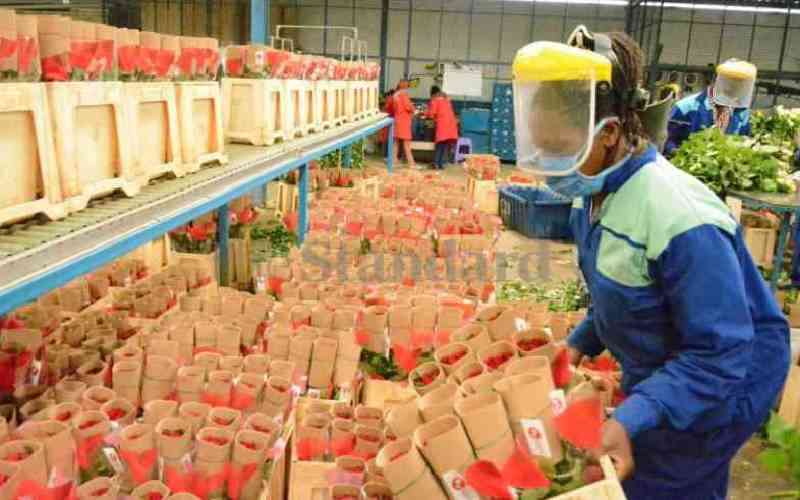
Behind a traditional memorial archway, white houses with grey tilted tiles on the roof stand near a green pond. In the courtyard, rockeries with cascades sit quietly amid pine trees, plum trees and elms.
It's the garden of east China's Anhui Province at the 2019 Beijing International Horticultural Exhibition.
The garden covers an area of about 3,000 square meters. Eager to present a glimpse of the province's unique culture, designers tried to recreate ancient Anhui village houses for an international audience. Even the memorial archway was made in tribute to the style of the Ming Dynasty (1368-1644).
Open from April 29 to Oct. 7, the horticultural expo has drawn international attention, putting Beijing's tourism in full bloom.
The 162-day expo is poised to impress an expected number of 16 million visitors from home and abroad with a huge collection of plants, flowers and eye-catching pavilions as well as ideas for green development.
More than 110 countries and international organizations, as well as over 120 non-official exhibitors, have confirmed participation, marking the highest attendance in the expo's history.
The exhibitors are vying to present their latest achievements in horticulture in the 503-hectare expo site at the foot of the Great Wall in Yanqing District on the northern outskirts of the national capital.
More than 2,500 cultural events, such as parades and horticulture competitions, will be held during the expo. Many of the participating countries have also selected a "national day" to hold special events to showcase their distinctive cultures.
This is the second time for China to hold such a high-level horticulture expo. Southwestern Chinese city Kunming held the expo in 1999.
A total of seven major highway projects aimed at improving traffic conditions for the expo have been completed.
According to Beijing’s transport department, the newly-built highways will not only relieve traffic pressure on the previous national highways leading to the exhibition site but also promote development and tourism in the neighboring areas.
The expo has finished its sponsorship work, signing contracts worth about 1 billion yuan (149 million U.S. dollars) with 25 Chinese firms, including Air China and China Mengniu Dairy Company Limited, a record high sum for similar events in the field.
The firms will not only sponsor, but also serve the expo with products, services and technologies, according to a consultant for the event.
A total of 2,000 volunteers have been recruited for the expo. Most of the volunteers have previous experience working in large events and can speak English fluently, and some are proficient in French, German and Spanish, according to the organizer.
Stay informed. Subscribe to our newsletter
Eye-Catching Pavilions
At the center of the expo site stands the Chinese Pavilion, a curved exhibition hall in the shape of "ruyi," a traditional Chinese ornament symbolizing good fortune.
As one of the expo's four main pavilions, the Chinese Pavilion displays a wide variety of plant species from across China and showcases the history of Chinese gardening and horticulture.
Such exquisite designs are found in other main pavilions such as the International Pavilion featuring 94 pillars in the shape of flower umbrella and the butterfly-shaped, multicolored Guirui Theater which is host to the expo's opening and closing ceremonies.
China's 31 provincial-level regions as well as Hong Kong, Macao and Taiwan have spared no effort in presenting their iconic cultural elements in the outdoor exhibit areas, such as the giant panda-themed garden set up by Sichuan Province, miniature Mogao Grottoes by Gansu Province and a model of ancient Tibetan village house by Tibet Autonomous Region.
In a meticulously designed garden covering about 3,000 square meters, southwest China's tourism province Yunnan recreates many of its acclaimed landmarks, such as the ancient Tea Horse Road in northern Yunnan, traditional houses in tourist city Dali and a set of bronze statues displaying the production process of Pu'er Tea.
The spotlight is also on more than 40 gardens and pavilions built by international exhibitors and branded with each country's unique culture and history.
The Azerbaijan Pavilion is modeled on a seashell, which symbolizes the country's "dynamism and passion for development and innovation," said Narmin Jarchalova, director of the pavilion.
Besides Azerbaijan's native plants and flowers, the pavilion exhibits the country's traditional foods, handmade carpets and photos of its scenic spots. Visitors can also watch animated videos showing Azerbaijan's culture inside the wooden pavilion.
A pomegranate tree, which Jarchalova said is a "national symbol for prosperity and fertility," has also been planted beside the pavilion.
Designed to show the quintessence of Japanese gardening, the Japan garden features a lovely courtyard dotted with trees, flowers, rocks, cascades and bamboo walls.
"The design of the Japan garden creates a perfect harmony of the courtyard, the plants, the water and the faraway mountains," said Takahashi Naruki, who is in charge of the construction project. "It represents the pursuit of a green lifestyle in traditional Japanese gardening."
All of the expo pavilions and gardens offer something to fascinate the visitors.
"The Beijing expo serves as a platform for participating countries to showcase their distinctive cultures," said Jiao Yutong with the Beijing International Horticultural Exhibition Coordination Bureau. "It also provides the countries with the opportunity to further cooperate in horticulture and agriculture."
Kingdom of Plants & Flowers
In a 20-meter-high greenhouse that covers 3,000 square meters, rare plants like red sandalwood and ficus varietgata are flourishing in their new home.
The Plant Pavilion, one of the major pavilions, houses up to 1,000 plant species, including over 100 rare species, said Fu Zhongren, technical manager of the pavilion.
The pavilion also features a rooftop garden filled with colorful, sweet-scented flowers and a plant genetics laboratory where visitors can learn about the latest scientific achievement in plant genome sequencing.
"The Plant Pavilion demonstrates an amazing 'kingdom of botany' to visitors," said Fu.
The Beijing expo presents a large collection of flowers, fruits, vegetables and herbs from across the world, including more than 1,200 species of flowers indigenous to China, such as peony, lotus, orchid, camellia and rhododendron, according to Zhou Jianping, executive deputy director-general of the Beijing International Horticultural Exhibition Coordination Bureau.
Visitors can also appreciate more than 40 kinds of new flower species from foreign countries, Zhou added.
In the garden of Anhui Province, more than 300 plants species, including over 200 species native to the province, are put on display.
"The plants in the Anhui garden include endangered species such as parrotia subaequalis, and we have made all efforts to take care of them," said Wang Yin, the garden's chief designer.
Rare plant species have also been transplanted from other parts of China to impress visitors to the expo, including a 100-year-old willow tree from Tibet and a 3-meter-tall pine tree from the Qinling Mountains in northwest China.
A vast variety of flowers, vegetables, herbal plants and fruit trees surround the Thailand Pavilion, a house in the style commonly seen in central Thailand.
It will host rotating exhibitions of mango, longan, durian and mangosteen trees as well as orchids and potted flowers during the expo.
The Beijing expo would "attract many visitors to learn about the importance of plants and greening in their lives," said Tim Briercliffe, secretary general of the International Association of Horticultural Producers.
Green Expo
The theme of the Beijing expo is "live green, live better," which is well embodied in the design of the expo gardens and pavilions.
The Chinese Pavilion is designed as an earth-sheltered structure. With most of its exhibition halls embedded in man-made terrace fields, both heat and humidity inside are better preserved, said Jing Quan, with the China Architecture Design and Research Group.
The rainwater collection system on the roof and a storage pond underground are used for terrace field irrigation, Jing said, adding that more than 1,000 photovoltaic glass panels have also been installed on the steel roof to utilize solar energy.
"Taking advantage of the natural conditions to save energy, the design of the Chinese Pavilion incorporates traditional Chinese architectural concepts and Chinese wisdom," Jing said.
During the planning and building of the expo site, the existing 50,000 trees in the area were preserved and became the premise of the design. Meanwhile, over 100,000 trees and shrubs were planted to improve the conditions of wetlands, purify water and provide habitats for migratory birds.
To protect the 15-meter-tall willows lining the road to the Horticultural Life Experience Pavilion, designers adjusted foundation heights of the nearby architectures to better suit the tall trees.
"Despite the costs, we have managed to protect the trees. That is what matters, as ecology comes first," said Zheng Shiwei, chief designer of the pavilion.
Construction wastes, such as stones and slush, have also been turned into walls, roads and a 25-meter-tall hill, on which visitors can overlook the entire expo area.
Next to the expo site stands Guihe River Forest Park with more than 100 kinds of plants, birds, and insects. A buffer zone separates the expo and the park so these species will not be disturbed.
"Visitors may see abundant wildlife here, including swans, during their visit," said Cheng Guanhua, with the Beijing International Horticultural Exhibition Coordination Bureau.
Zhou Jianping said the ecology-prioritized principle has not only been stressed for the planning, design, and construction of the expo, but will also be emphasized for its future operation and utilization, such as using electric vehicles in the expo area.
"The Beijing expo provides an exciting opportunity to demonstrate to the world the latest thinking and new ideas on how plants and landscapes can make lives better," said Tim Briercliffe.
"We have a very real expectation that in 2019 Beijing will become recognized as an example for green living," he added. Enditem
 The Standard Group Plc is a
multi-media organization with investments in media platforms spanning newspaper
print operations, television, radio broadcasting, digital and online services. The
Standard Group is recognized as a leading multi-media house in Kenya with a key
influence in matters of national and international interest.
The Standard Group Plc is a
multi-media organization with investments in media platforms spanning newspaper
print operations, television, radio broadcasting, digital and online services. The
Standard Group is recognized as a leading multi-media house in Kenya with a key
influence in matters of national and international interest.
 The Standard Group Plc is a
multi-media organization with investments in media platforms spanning newspaper
print operations, television, radio broadcasting, digital and online services. The
Standard Group is recognized as a leading multi-media house in Kenya with a key
influence in matters of national and international interest.
The Standard Group Plc is a
multi-media organization with investments in media platforms spanning newspaper
print operations, television, radio broadcasting, digital and online services. The
Standard Group is recognized as a leading multi-media house in Kenya with a key
influence in matters of national and international interest.









